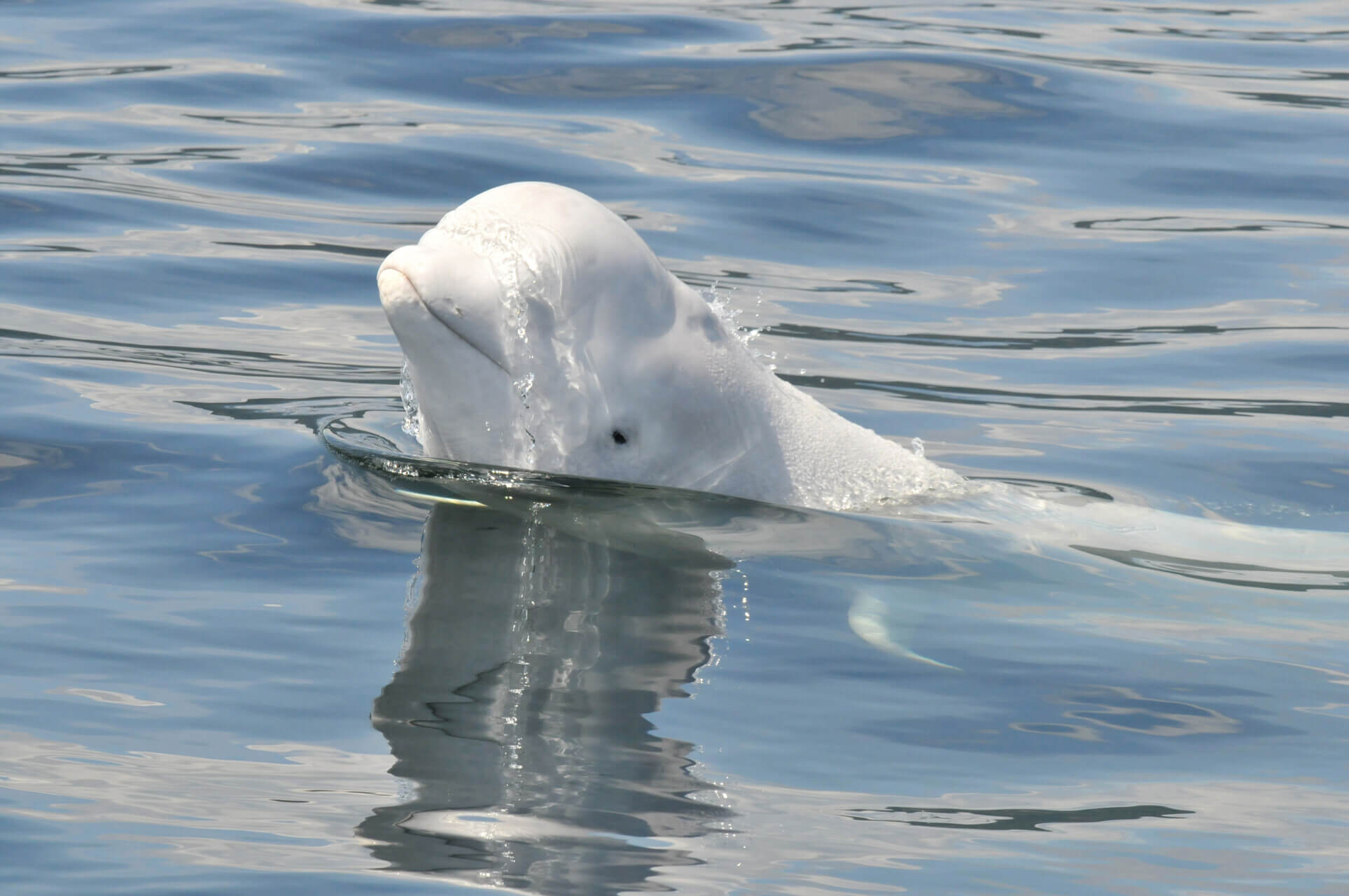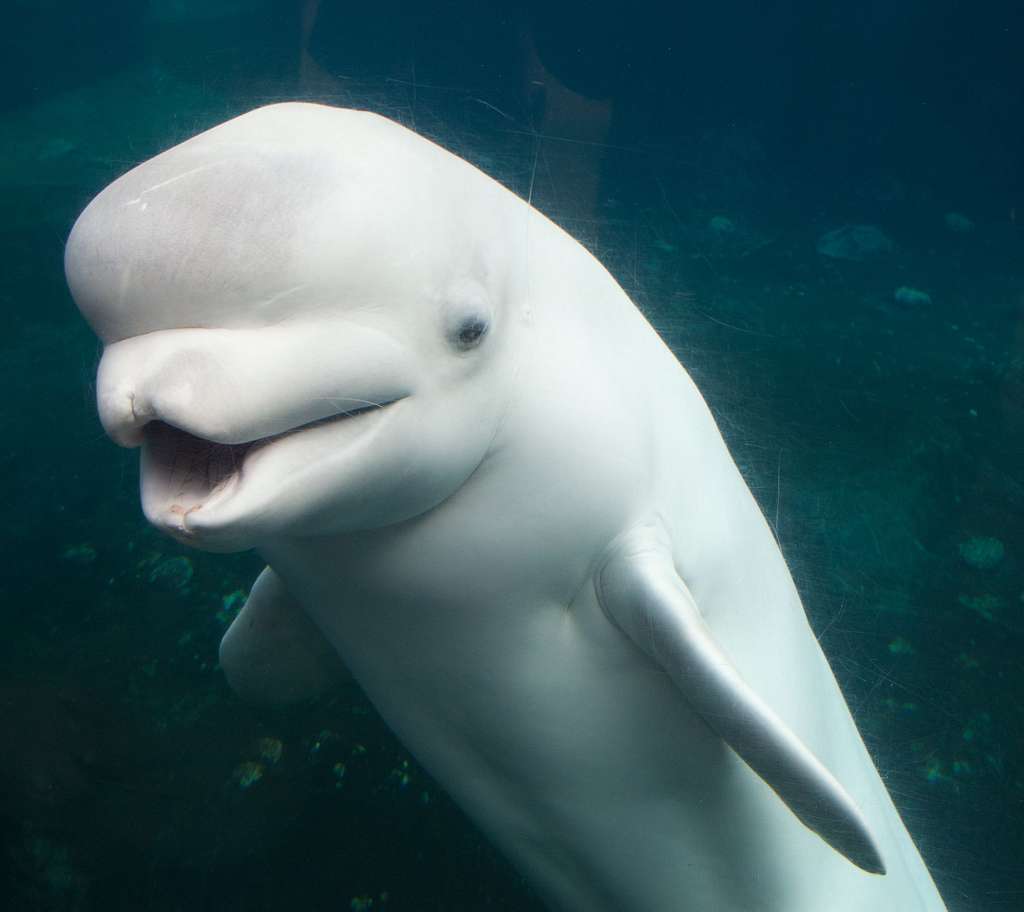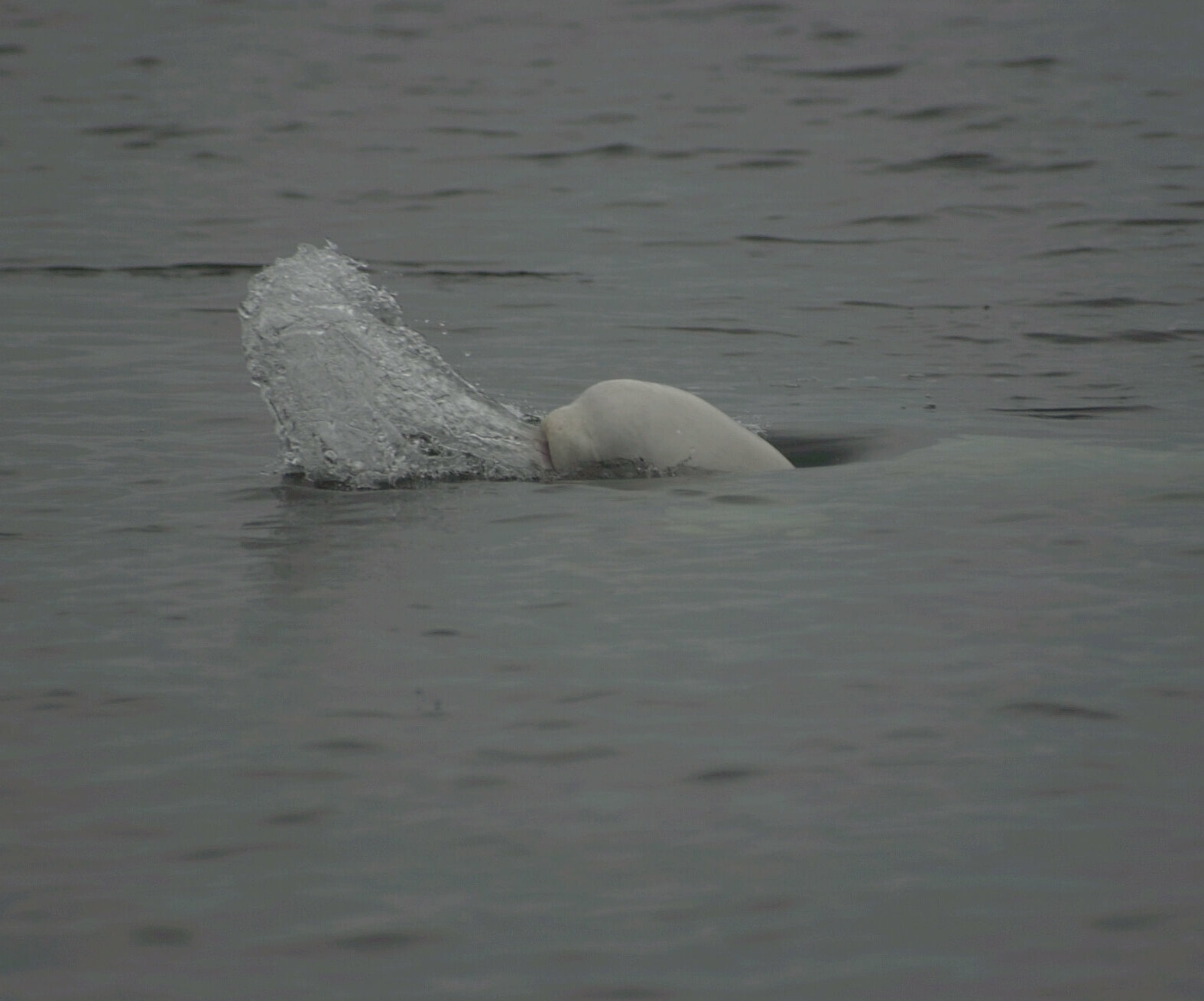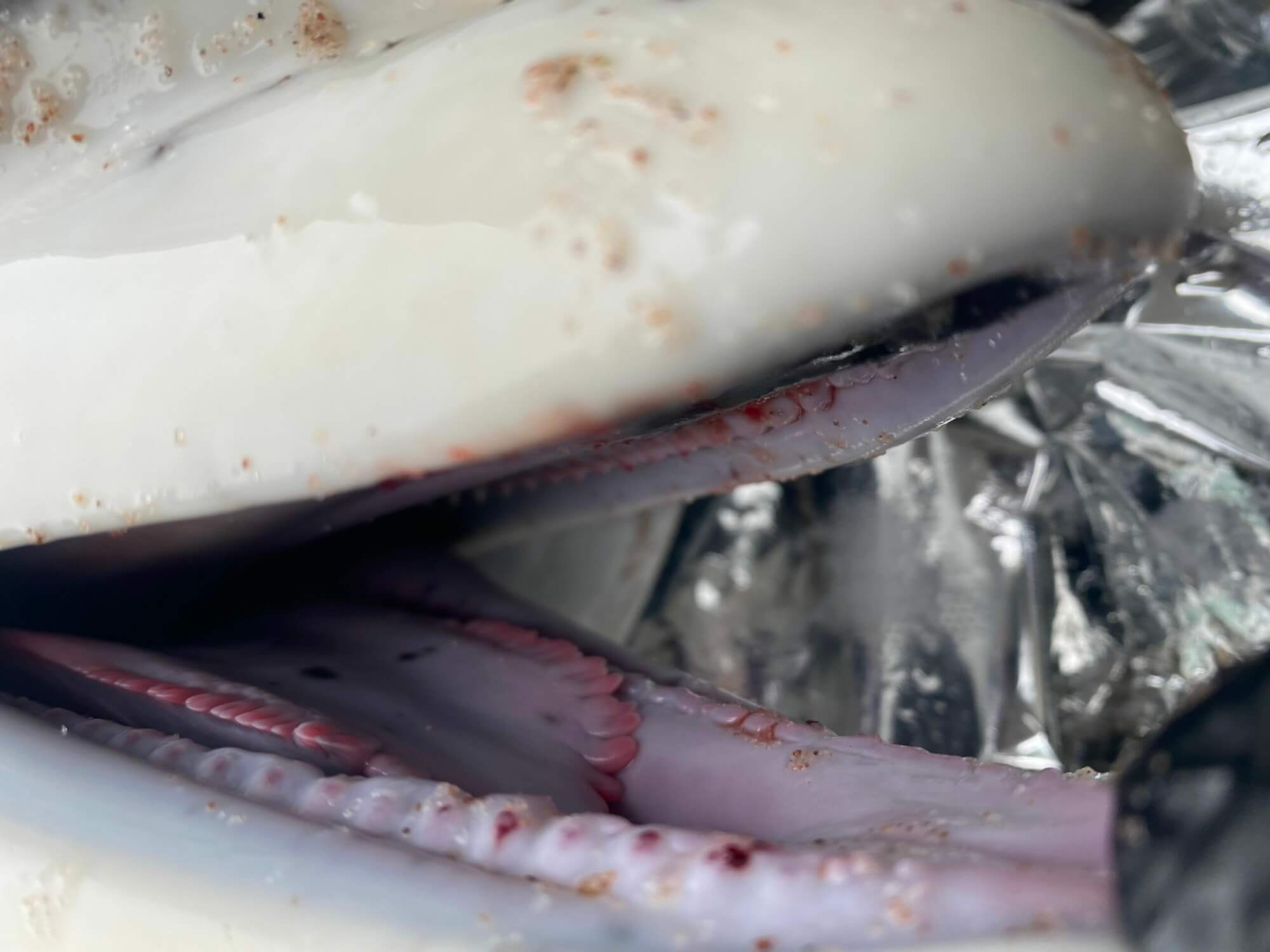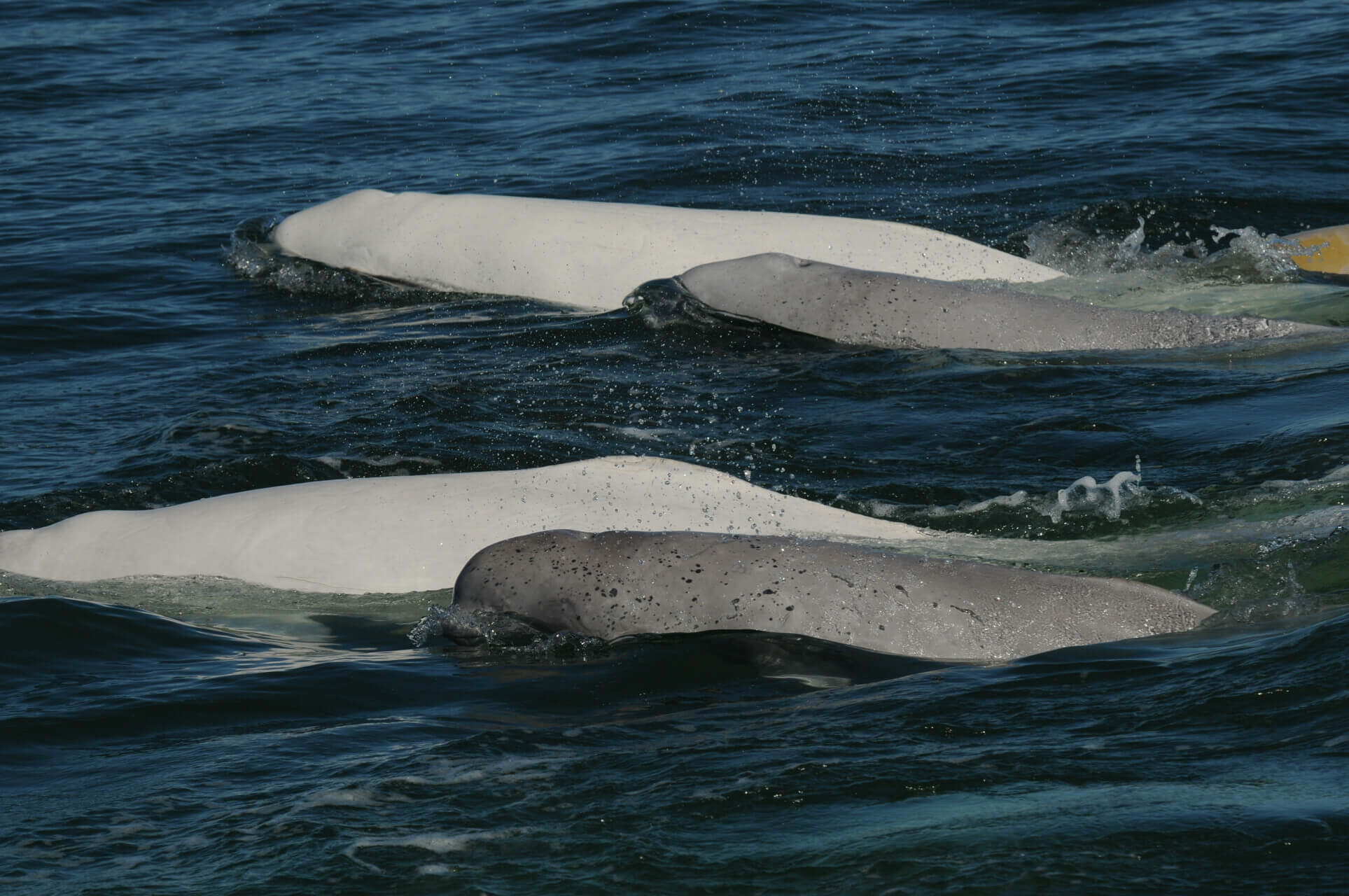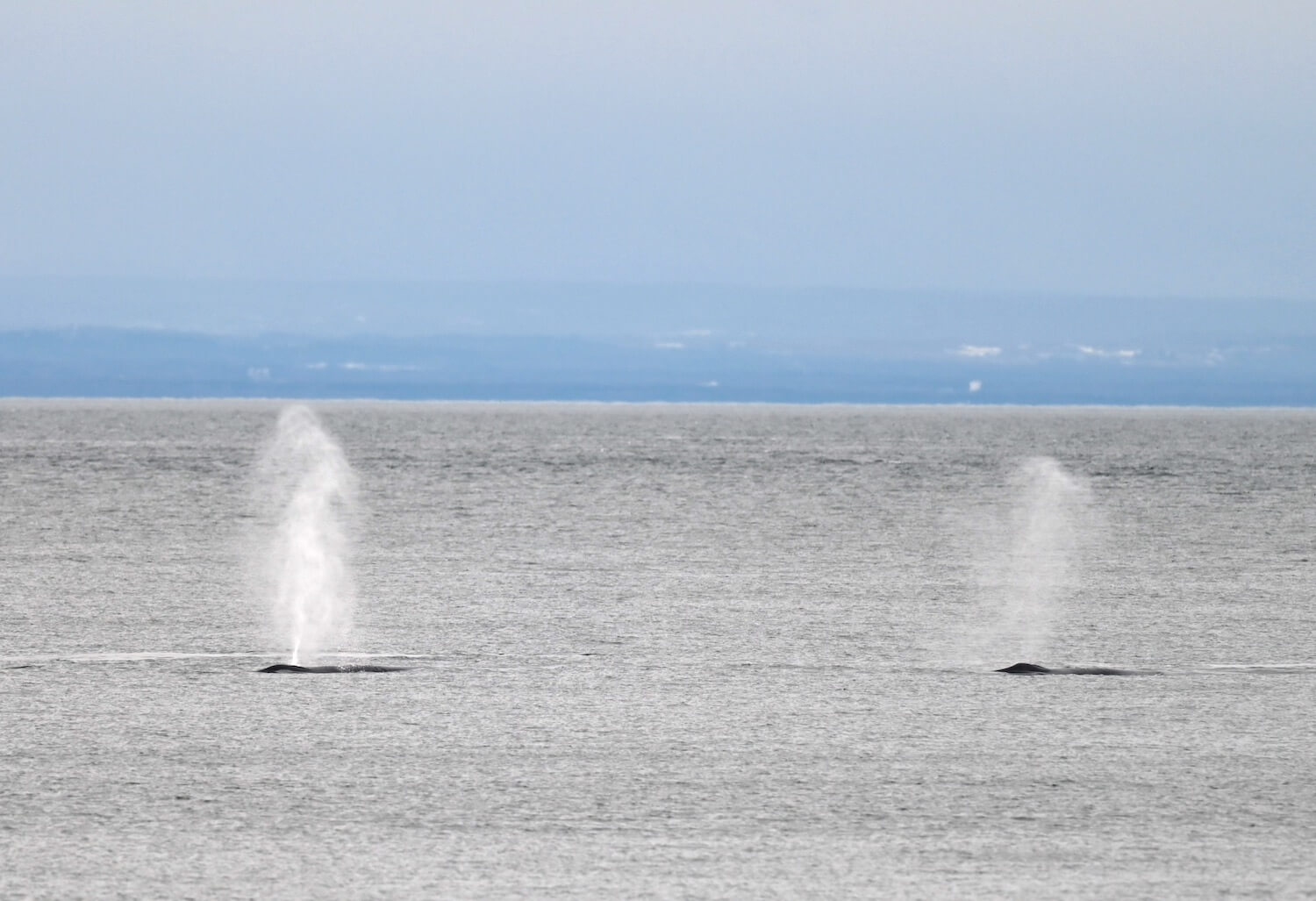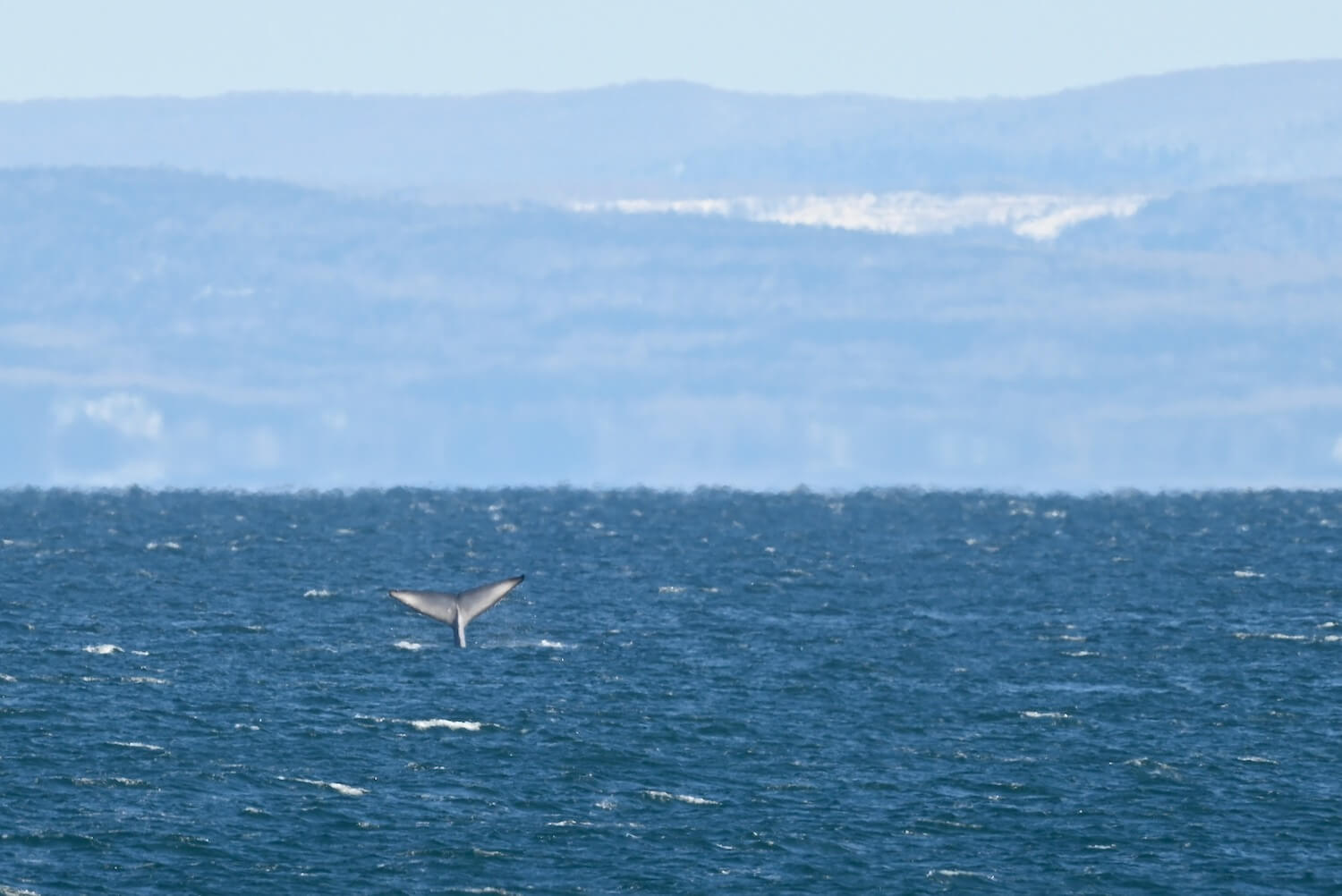Belugas are known for their expressive faces, but what’s behind their endearing smirk? From an “O”-shaped mouth to water spitting to a flower-like tongue, these white whales have more than one rabbit in their hat!
A messy eater
As far as cetaceans go, belugas have a rare ability that is perfect for diversifying their repertoire of facial expressions. Thanks to their extremely flexible lips and tongues, they can contract their facial muscles to create a circular shape with their mouths. What good is this skill if it’s not for giving a little peck on the cheek?
Their jaws are lined with rows of 8 to 10 teeth, each covered with a thin layer of enamel. These teeth wear down quickly, leaving just a small stump. This is why belugas rely on their ability to form an “O” with their mouths to facilitate suction feeding.
This technique is characterized by a rapid expansion of the water volume inside the animal’s mouth, which generates pressure for it to slurp up its prey. Their tongue is a useful tool for this hunting technique, as it envelops the prey once the latter has been sucked up, allowing the animal to hold it in place.
The presence of bottom-dwelling fish in the beluga’s diet suggests that their tongue is used not only for suction, but also to create a hydraulic jet. The latter is likely a hunting technique used to blow sand, silt, and mud in order to locate and corral benthic prey. Belugas therefore feed on the seabed until they’re covered in mud!
Belugas can still use their teeth to catch their prey. Like other toothed whales, belugas use their teeth not to chew, but rather to catch or hold their prey, which they swallow whole. Their tongues are designed to orient their prey (e.g. by placing them headfirst) to facilitate swallowing and avoid choking. This is why belugas mainly feed on small fish. And this way they don’t bite off more than they can chew!
A flower-like tongue
Newborn belugas have a unique tongue that is lined with small petal-like extensions. But why? Surprising as it might sound, whales nurse their offspring! However, cetaceans lack the muscles needed to suckle. Calves will stimulate their mother’s breasts by exerting pressure on them until the muscles around the mammary glands expel the milk. The atypical shape of their tongues is believed to make it easier to suck and channel the milk toward their throats. Outgrowths create a watertight seal. When drinking their mother’s milk, calves will curl their tongue and use it … like a straw! With age, the “petals” gradually disappear as the young animal is weaned.


